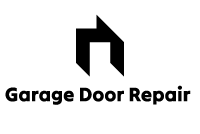Welcome to Laura’s Complete Guide to Garage Door Repair. Here, we’ll delve into troubleshooting and solutions for common problems you might encounter with your garage door. Get ready to bring functionality and safety back to your home’s entryway!
Troubleshooting Your Garage Door: Identifying and Fixing Common Issues
When troubleshooting your garage door, identifying and fixing common issues is crucial to ensure the safety and functionality of what is often the largest moving part of your home. The following are some of the most prevalent problems faced by homeowners with potential solutions:
Garage Door Won’t Open or Close: This can be caused by something as simple as an obstruction in the door’s path or as serious as a broken spring. Check to see if there is anything blocking the door’s movement. If the tracks are clear, examine the springs to ensure they are intact.
Noisy Garage Door: Squeaking or grinding noises might suggest that your door needs lubrication. Regular maintenance should include lubricating the springs, hinges, and rollers. However, if noise persists, it could be a sign of worn parts that need replacement.
Remote Control Malfunction: If your garage door remote isn’t working, start by replacing the batteries. If that doesn’t solve the problem, reprogram the remote or consider purchasing a new one if it’s old or damaged.
Door Off Track: A door that has come off its track can pose significant safety risks. This often occurs when the door is hit by a vehicle or due to wear and tear on the cables and rollers. Realigning a garage door can be dangerous and typically requires professional assistance.
Sagging Garage Door: Over time, a door may begin to sag, making it difficult to open and close. This can sometimes be corrected by adjusting the tension rods on the back of the door. If your door doesn’t have tension rods, you might need to install them or get the help of a technician.
Remember that working on garage doors can be dangerous, especially when dealing with springs and electric components. Always prioritize safety, and consult a professional for complex repairs or when in doubt. Regular maintenance can help prevent many of these issues and extend the life of your garage door.
Frequent questions
What are the most common problems that require garage door repair?
The most common problems that require garage door repair include broken springs, worn-out rollers or hinges, misaligned or off-track doors, faulty garage door openers, and issues with remote controls or keypads. Additionally, frayed or broken cables and damaged panels may also necessitate repairs. Regular maintenance can help prevent these issues.
How can homeowners safely perform basic garage door repairs on their own?
Homeowners can safely perform basic garage door repairs by first ensuring the power is disconnected to prevent accidents. They can then perform tasks such as realigning sensors, tightening hardware, and lubricating moving parts like rollers, springs, and hinges with a garage door-specific lubricant. It’s crucial to avoid touching the torsion springs as they are under high tension and can cause serious injury. If in doubt, always consult with a professional garage door repair technician for assistance.
What are the signs that indicate a professional garage door repair service is needed?
The signs indicating you need a professional garage door repair service include: unusual noises during operation, the door being off its tracks, slow or unresponsive opening and closing, broken springs or cables, and the door not sealing completely when closed. If you observe any of these issues, it’s important to contact a professional to prevent further damage or potential safety hazards.
In conclusion, garage door repair can seem daunting at first, but understanding the common problems and their solutions is the first step to restoring your garage door’s functionality. From misaligned tracks to broken springs, most issues have straightforward fixes that homeowners can often tackle with a little patience and the right tools. Remember, regular maintenance can prevent many of these problems from occurring in the first place. However, for complex issues or anything that involves the risk of injury, it’s always best to call in a professional technician. With this complete guide, you’re now better equipped to assess and address the health of your garage door, ensuring it serves you safely and efficiently for years to come.
